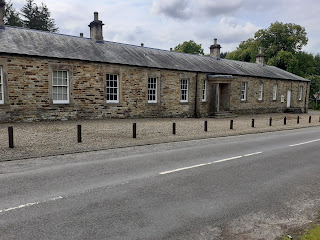Fragments of the Town's Past ... and of the North-East, too - with all profits from the sale of my books being donated to the Great North Children's Hospital.
Tuesday, 20 August 2024
The Victoria Tunnel: the Northern Section
Monday, 12 August 2024
I Went to Allenheads ... and it was Closed
Sunday, 4 August 2024
Iris Brickfield Park: A Brief History
Prior to 1900, the area in question lay unused, being rather soggy and having formerly formed a part of East Heaton Farm. Nearby Middle Pit was worked for some time a little to the west, and it is likely that waste from these workings indicated that the clay lying hereabouts was suitable for brickmaking. So, in 1903, a clay pit with an associated brick- and tile-making operation began, located precisely over the site of the future park. The bricks were used in the construction of many of the surrounding streets in the following decade or so.
The original firm, Standard Brick Company, who had other sites in the area, went into receivership in 1908. The site was taken over by James Frazer, who renamed the operation the Iris Brick Works. Manager John Moorhead ran both the Heaton works and its sister site at Pelaw for 30 years, though operations at Heaton were relatively small-scale – and it was wound down during the Second World War.
In 1945, the site was purchased by the city council and used as a rubbish tip for a few years (handily filling up the clay quarry); after which it was used as a rough recreational ground, until it was properly landscaped in the 1990s. It is now used by locals and nature in equal measure, including an area given over to allotments.
But why ‘Iris’? Occasional references on the internet suggest it was the name of the wife (or daughter) of the owner of the brick works; and there is the odd mention of an ‘Iris Ogilvie’ being involved in the ownership of the Pelaw branch of the works. But searches of genealogical records for the era do not support either claim. Can anyone enlighten me?
[article taken from my book Newcastle-upon-Tyne: Tales From the Suburbs - see left-hand column for further details]













